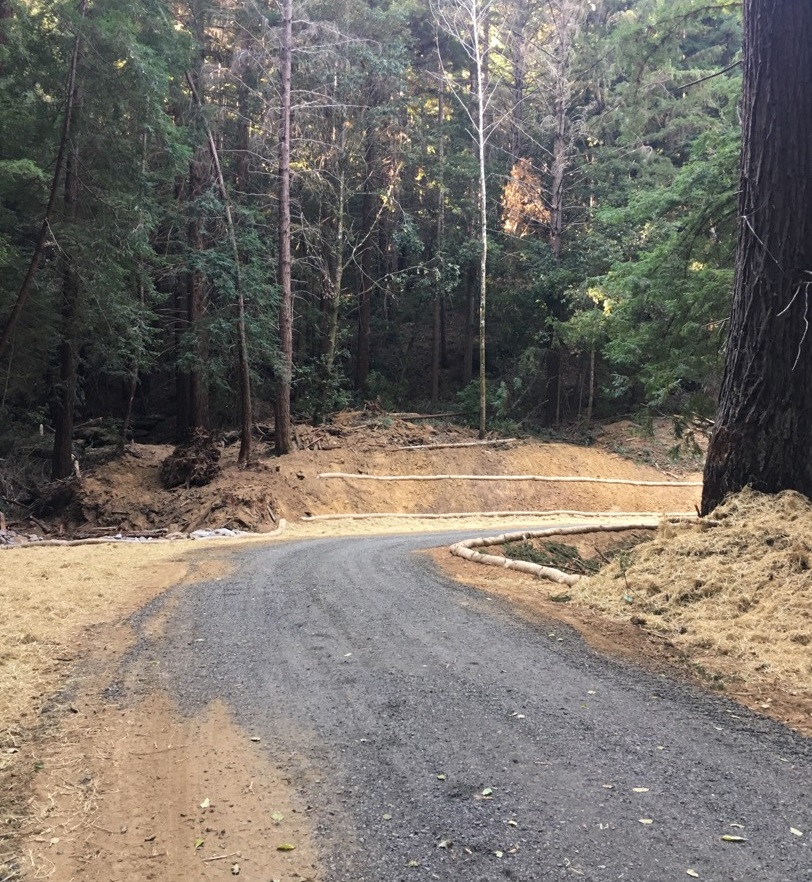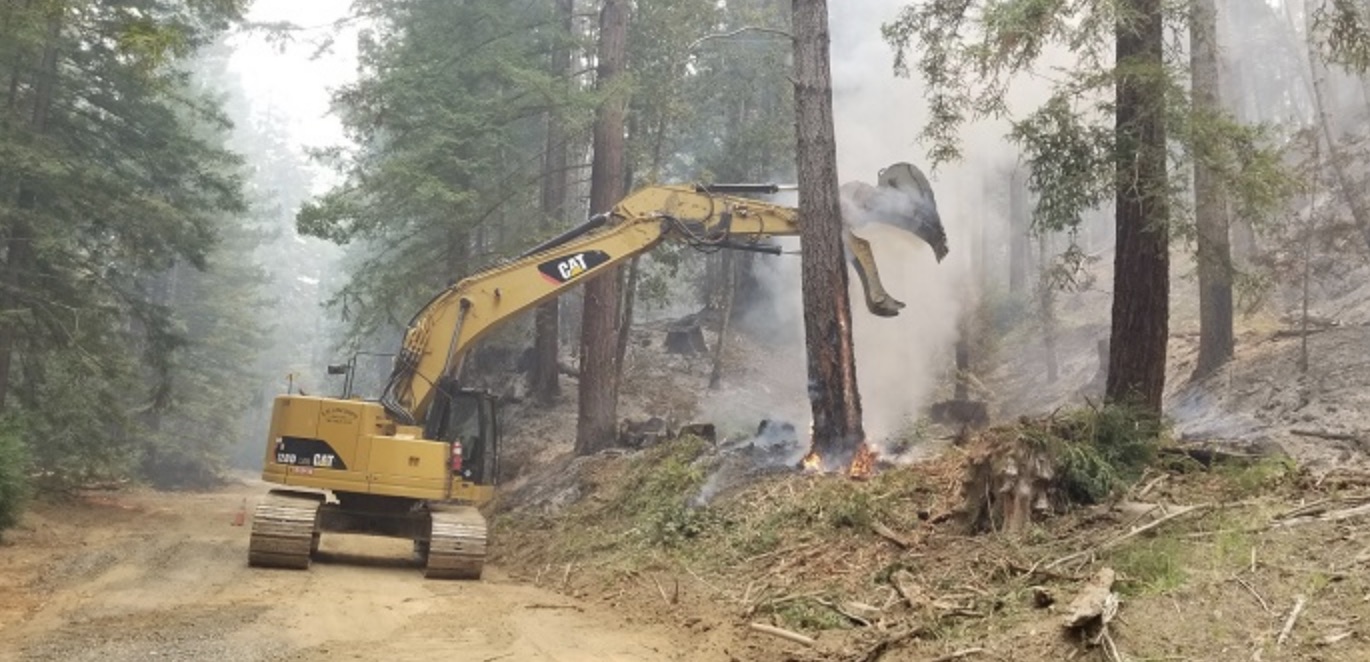|
Getting your Trinity Audio player ready...
|
PHOTO ESSAY.
Summer 2020: The repair of Dark Gulch creek crossing on Old Haul Road in Pescadero Creek County Park is underway!
Have questions about the Dark Gulch project?
Want to be added to the mailing list for weekly construction updates?
Contact RCD Project Manager Sara Polgar (sara@sanmateoRCD.org)
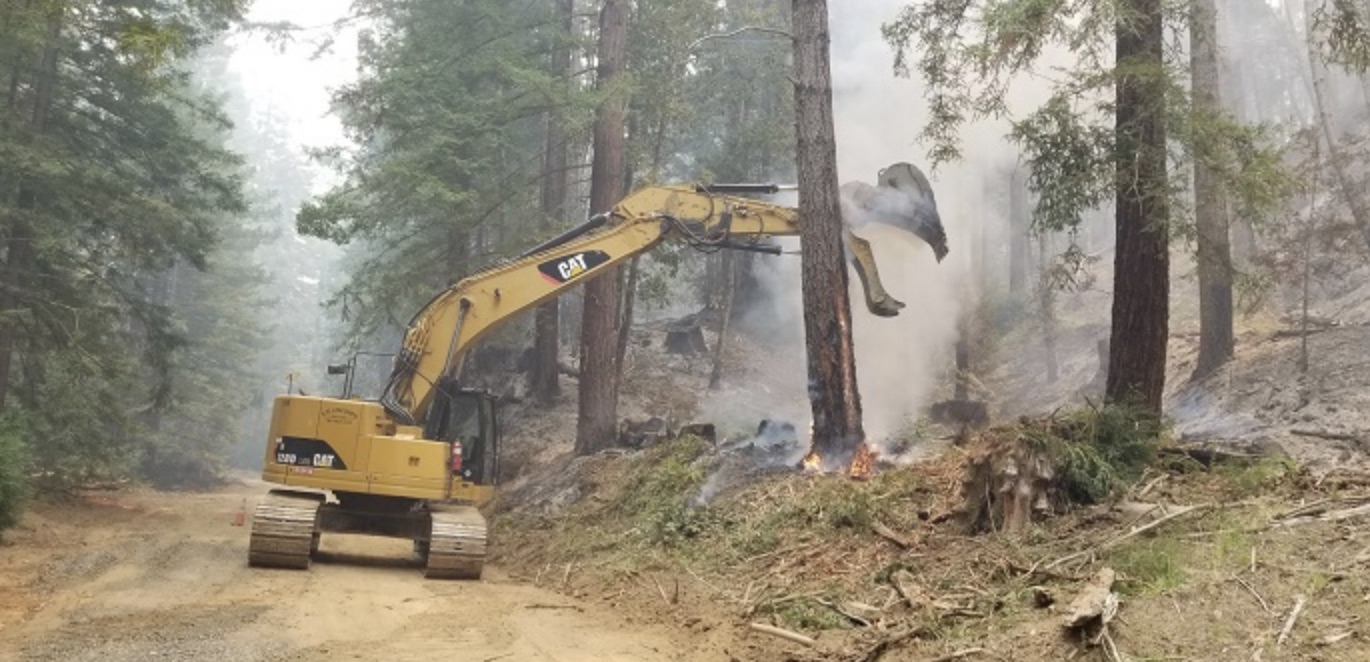
Background: Old Haul Road
The Old Haul Road in present-day Pescadero Creek County Park follows the historic route through the redwoods of a railroad line originally built by the Santa Cruz Lumber Company in the 1930s and 40s to haul logs to its mill. The lumber company converted it to a truck road in the 1950’s, and in 1971 San Mateo County purchased the property as a county park. Today, the unpaved road is a popular hiking and biking route, and is essential vehicle access for park management, emergency response and fire protection.
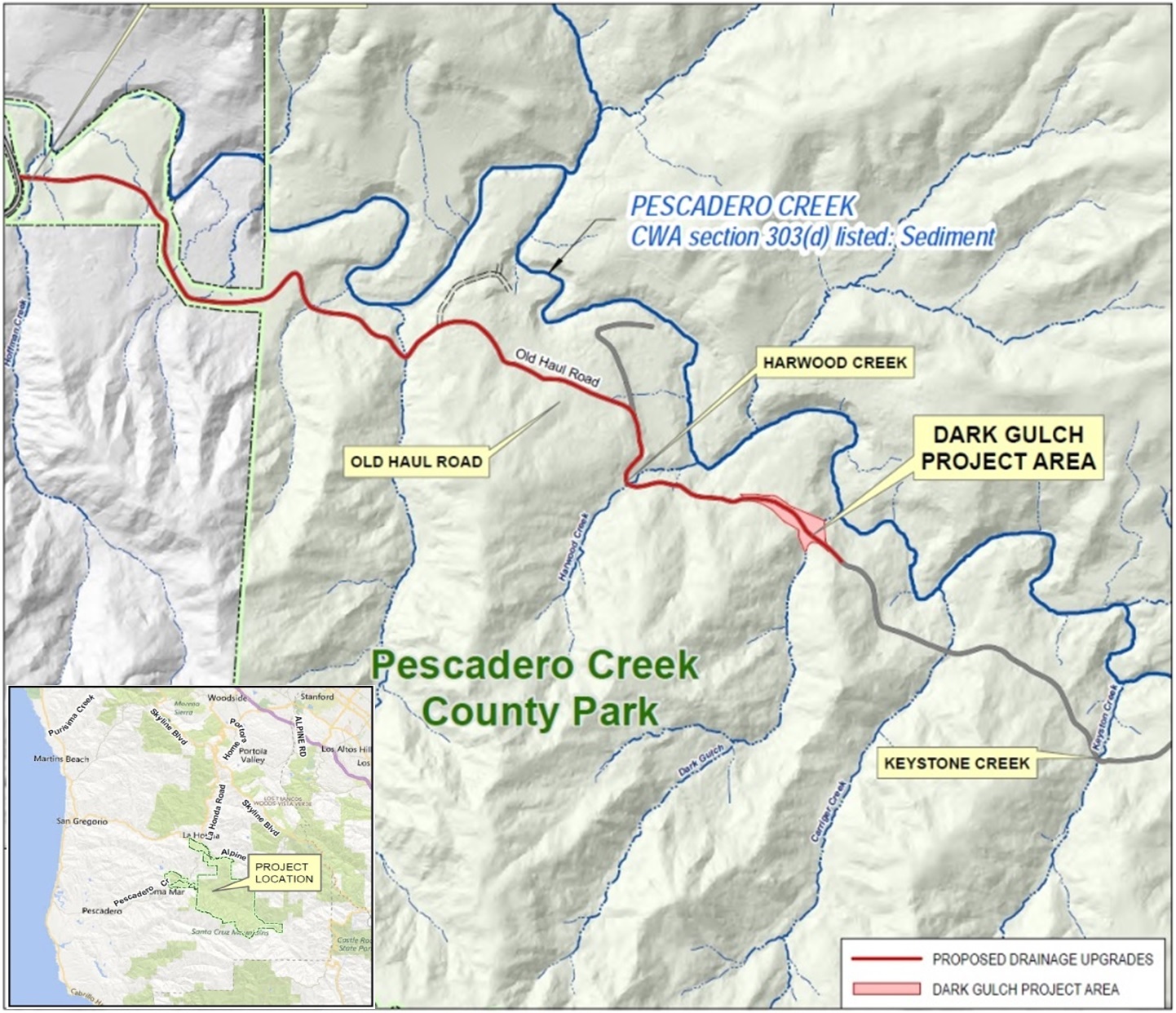
The road runs along the south side of Pescadero Creek and crosses numerous creek tributaries. To maintain a flat grade for the rail line at creek crossings, the lumber company built Lincoln log-style bridges, called crib log structures, to support the rails, and form box culverts (openings) that allowed for stream flow through the bottom of the crossing. These crib log structures are also known as Humboldt Crossings. In this area of the Santa Cruz mountains, many of the creeks naturally have very steep slopes (e.g. 75% slopes) and are deep cut, so the rail line at each crossing was often far above the creek bottom – as much as 70 feet up.
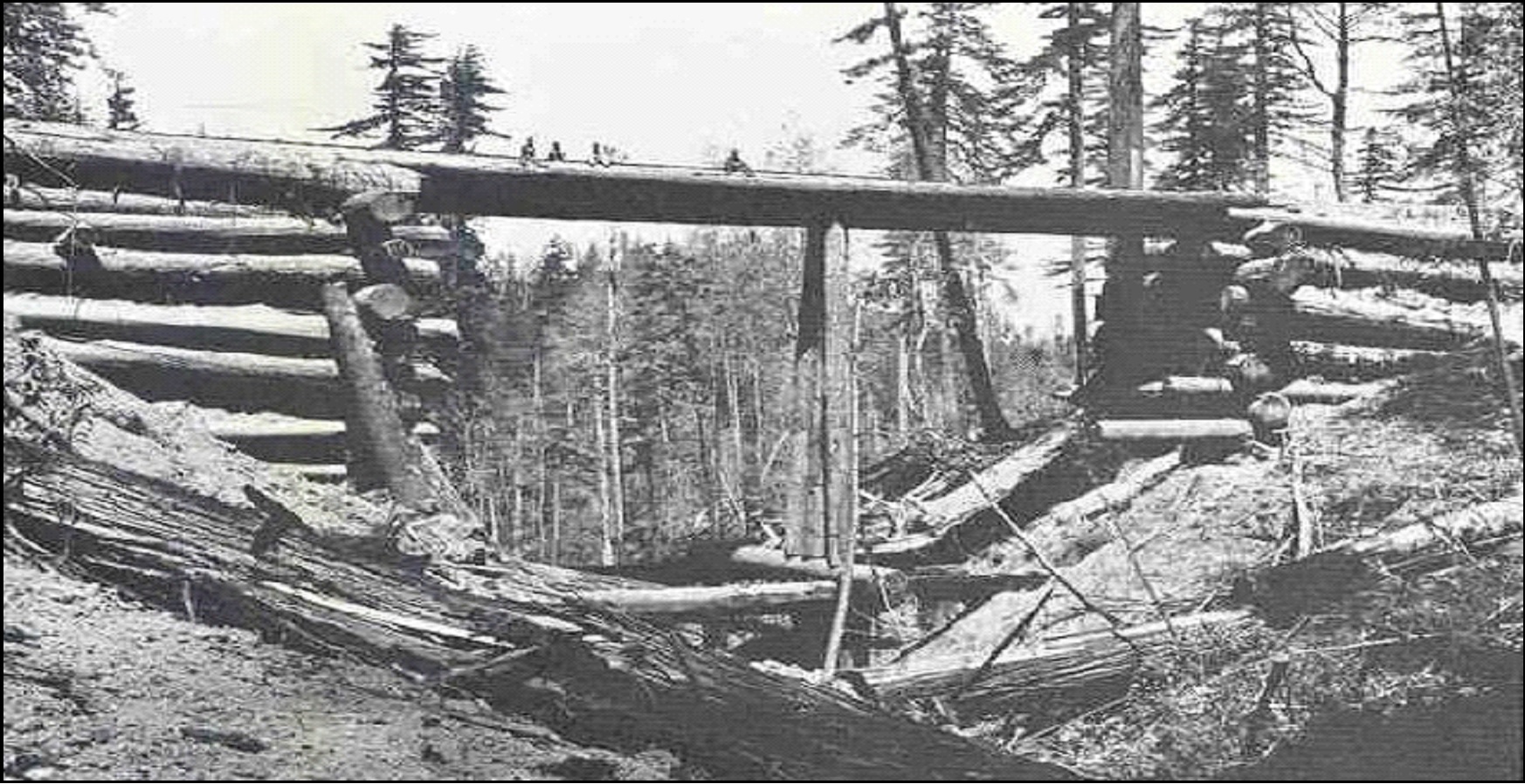
Crib log rail crossing with box culvert on Old Haul Road in 1943. Note the men sitting on top of the crossing. Santa Cruz Lumber Company photo.
At the time when they were built, these Humboldt crossings served the purposes of the timber operation, but they were constructed without regard for long-term stability or impacts to the creeks and water quality. Over time the crib logs regularly decay and collapse, filling creeks with debris and cause material to accumulate upstream of crossings. Typical maintenance is to build the road back up by piling new material on top. During storms, creek flows that percolate through the collapsed structures erode away sediment, causing sinkholes and further destabilizing the crossings… and the cycle continues.
Massive amounts of eroded sediment are carried downstream into Pescadero Creek, harming habitat and water quality for native fish populations that are threatened and endangered: coho salmon (Oncorhynchus kitsutch) and native steelhead trout (Oncorhynchus mykiss). Pescadero Creek was listed in 1998 under the Clean Water Act by the San Francisco Bay Regional Water Quality Control Water Board as impaired by excess sediment for habitat for these fish populations.
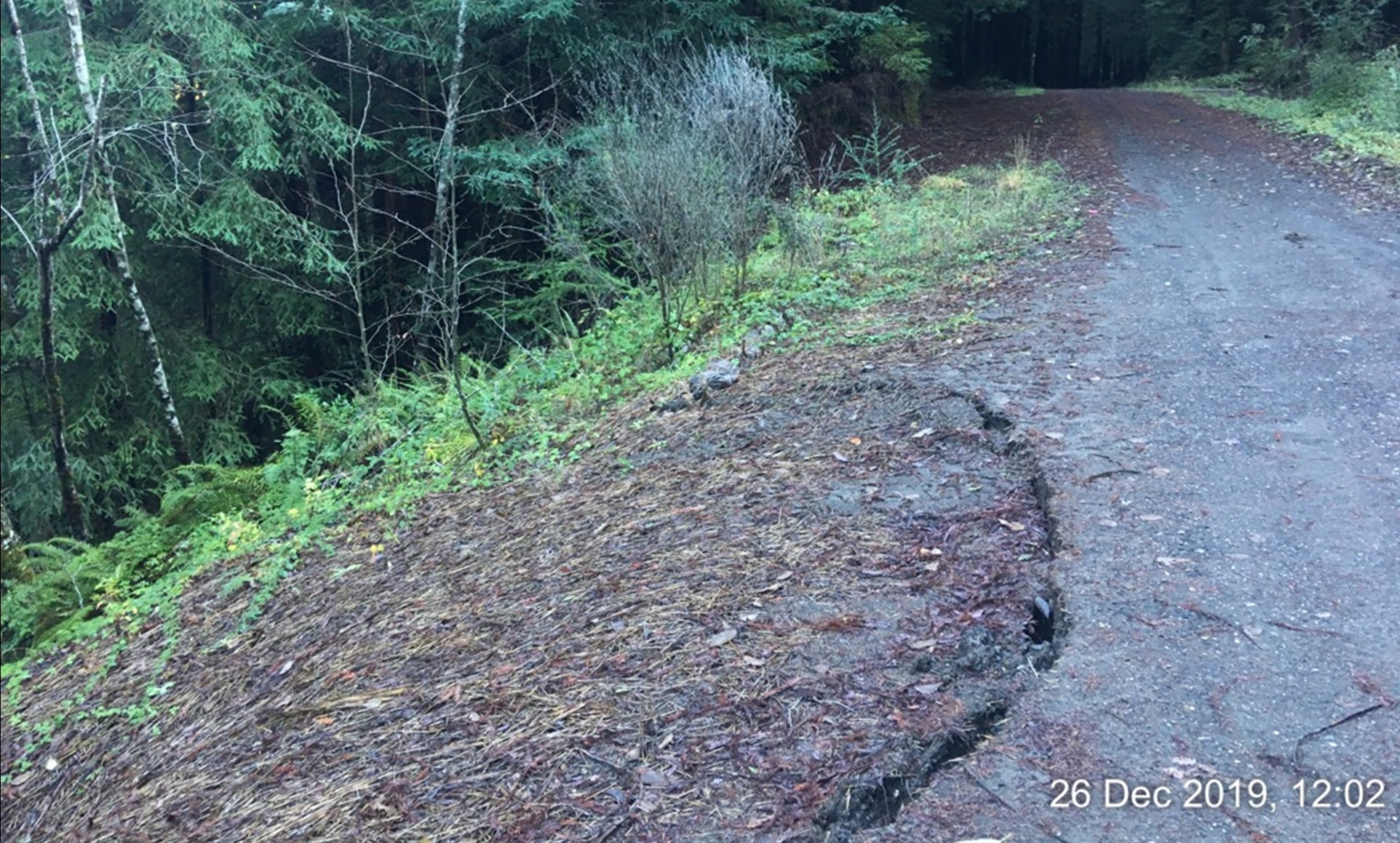
Above and middle: Sinkholes that formed in the road surface at the Dark Gulch creek crossing (in 2019 and 2015, respectively).
Right: View of the Dark Gulch crossing from downstream (February 2020). Note the crib logs (running across the photo) and erosion visible between the logs.
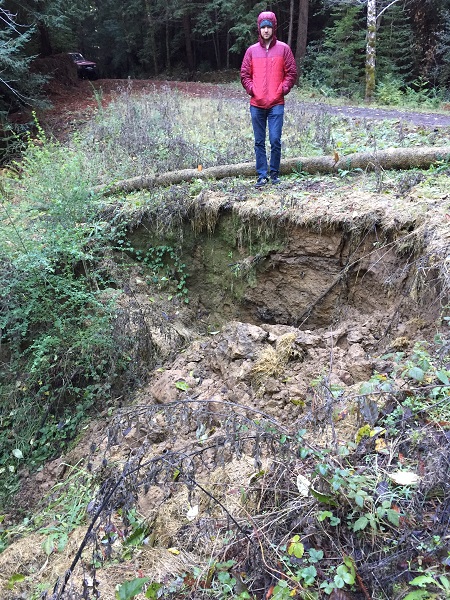
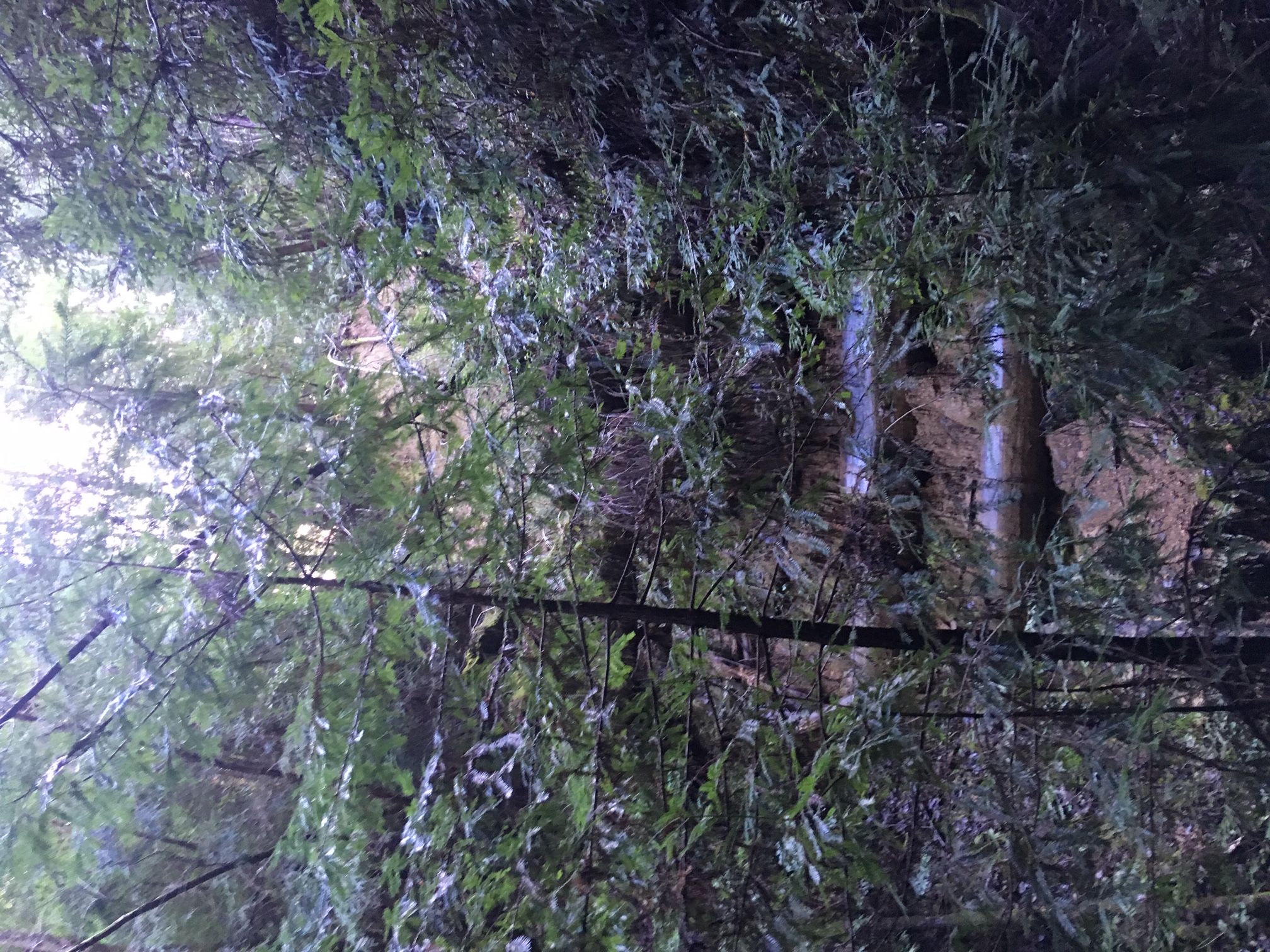
The Dark Gulch Crossing Stabilization Project
In 2015 the San Mateo County Parks Department (Parks) hired the RCD to assess conditions along the Old Haul Road, and since then the RCD and Parks have been working together to fix the crossings that are in the worst shape. Working with coastal engineering geologist Tim Best, the RCD engaged the technical advisory committee (TAC) of the San Mateo County Integrated Watershed Restoration Program (IWRP) with stakeholder experts from the Regional Water Quality Control Board, CA Department of Fish and Wildlife, US Fish and Wildlife Service and NOAA National Marine Fisheries Service, as well as the Parks’ Natural Resources Management staff and the County Public Works Department on prioritizing crossings and evaluating alternatives for repairing them, addressing species protection measures in the project design and construction approach, and identifying and applying for funding.
The TAC identified the very large crossing at Dark Gulch as a high-priority for repair. Erosion at Dark Gulch sheds about 600 cubic yards of sediment every year. And, although unlikely, the Dark Gulch crossing could catastrophically fail which would send up to 38,000 cubic yards of material – large logs and smaller woody debris, but mostly sediment – into Pescadero Creek which is only about 100 yards downstream. That kind of debris flow would cause significant damage to the downstream channel, streamside habitat, and possibly bridges and other structures along Pescadero Creek.
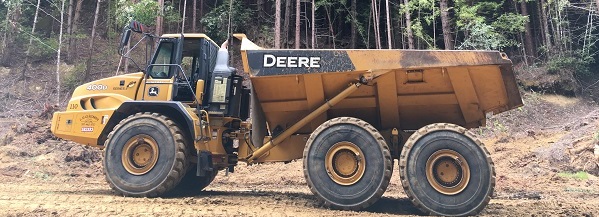
How big is Dark Gulch?
The total material in the crossing equals ~1,900 dump truck loads…enough to bury a football field 17 feet deep! Prior to this project, the crossing shed ~30 dump truck loads of sediment annually.
The TAC and project team determined that the best alternative for constructing a long-lasting crossing with proper drainage that prevents future erosion, would be to fully remove the eroding material and collapsed crib logs in the Dark Gulch crossing, install a large-diameter (i.e. 6-foot) pipe culvert to convey creek storm flows, and reconstruct a smaller, stable crossing.
In addition to stopping the sediment erosion that it is harming fish habitat downstream, this approach would ensure that crucial vehicle access is maintained on Old Haul Road for Parks and CALFIRE.
The Construction Approach:
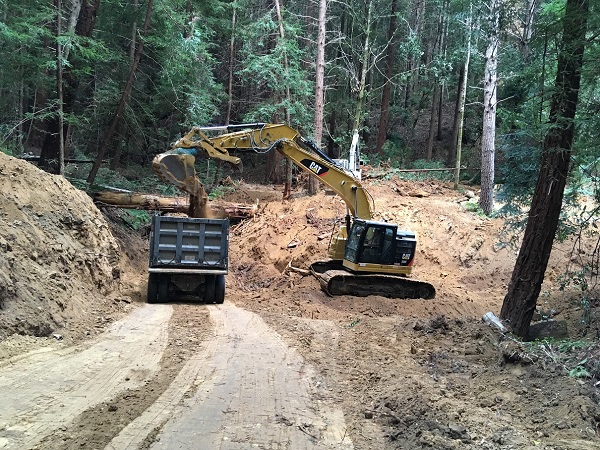
1. Remove crossing fill material.
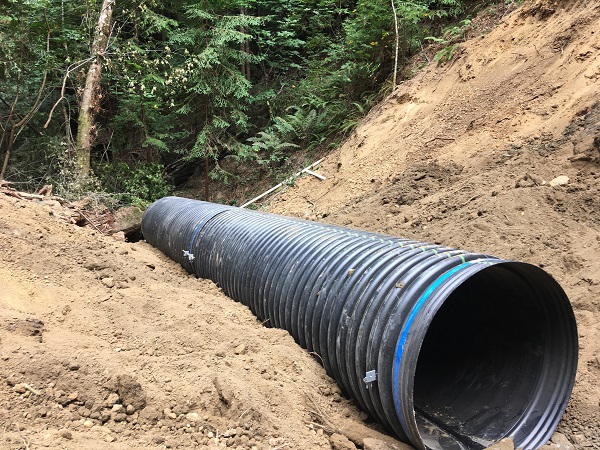
2. Install culvert pipe to convey storm flows.
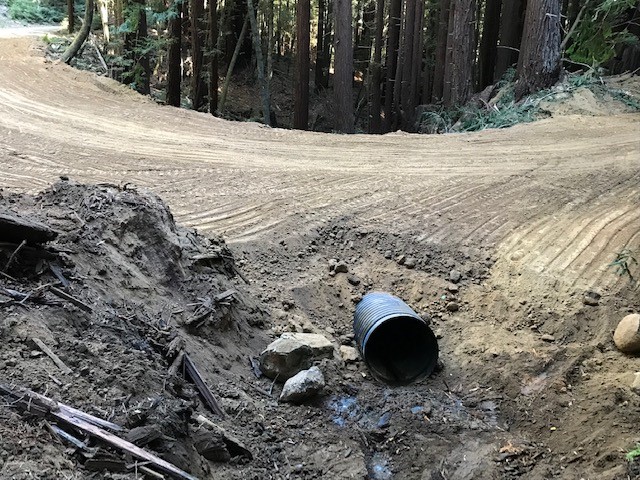
3. Rebuild crossing with engineered fill.
In 2019, the RCD worked with Parks, the project engineer and regulatory agency staff to complete designs, technical specifications, and environmental review and permitting, and secure funding for construction through San Mateo County Measure K Funds ($2.15 million) and a grant from the Environmental Protection Agency and the State Water Resources Control Board under the Federal Nonpoint Source Pollution Control Program (Clean Water Act Section 319) ($800,000).
In preparation for going to construction in summer of 2020, L.D. Giacomini Enterprises, Inc was selected as the construction contractor through a competitive bid process conducted by the RCD in February 2020. Parks staff began Marbled Murrelet species protection measures (see box, below) in March 2020, and conducted pre-construction biological surveys and environmental worker awareness training in late spring. Meanwhile, the RCD completed developed construction COVID-19 protocols and signage (in compliance with latest State & County requirements) as well as standard project preparations.
Construction of Dark Gulch began in May 2020 and is scheduled to continue through mid-October.
Protecting Marbled Murrelet
The project location in Pescadero Creek County Park is in the vicinity of coastal redwoods that are nesting habitat for endangered Marbled Murrelet, a species of small seabird. Due to the large scope of the crossing excavation, construction unavoidably overlaps with nesting season (March through July). The RCD and the Parks Natural Resource Management staff worked with state and federal fish and wildlife agencies to design the project to avoid impacts to the murrelet. For example, no potentially suitable nesting trees are disturbed, and daily construction work starts after dawn and ends before dusk — the times when murrelets are active, flying between their nests and the ocean to feed. Another important protection measure is the use of a solar powered noise deterrence system (pictured, right). At the start of the nesting season, Parks staff installed speakers at the Dark Gulch crossing which broadcast construction noises daily (at the same levels as would occur during the project) at dawn and dusk.
This approach ensured that the birds either avoided selecting nests around the project site because of the noise, or if they did nest within hearing distance, the start of construction did not introduce a new environmental factor (i.e. construction noise) that caused a disturbance to their nesting.
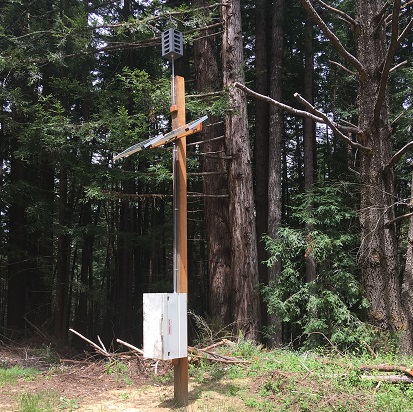
A Practice Run
In Fall of 2018, the RCD and Parks successfully replaced crossings along Old Haul Road that were failing at Harwood and Keystone Creeks. These were smaller crossings (~2,500 cubic yards each), but the overall design and construction approach are the same as for the Dark Gulch crossing. This earlier project provided valuable experience and lessons learned that have been applied to the much larger-scale Dark Gulch project.
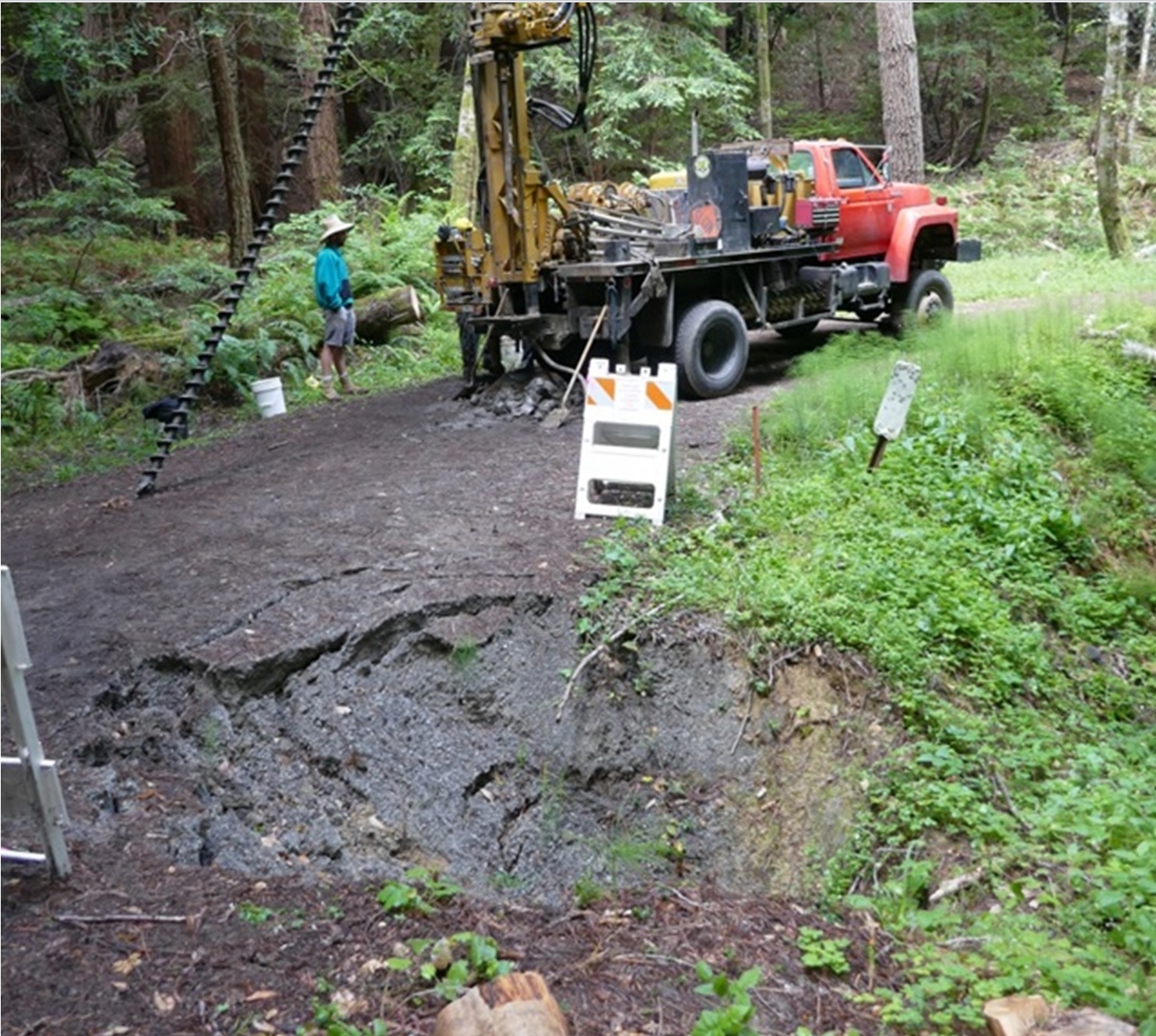
Harwood Creek crossing before construction (2017)
